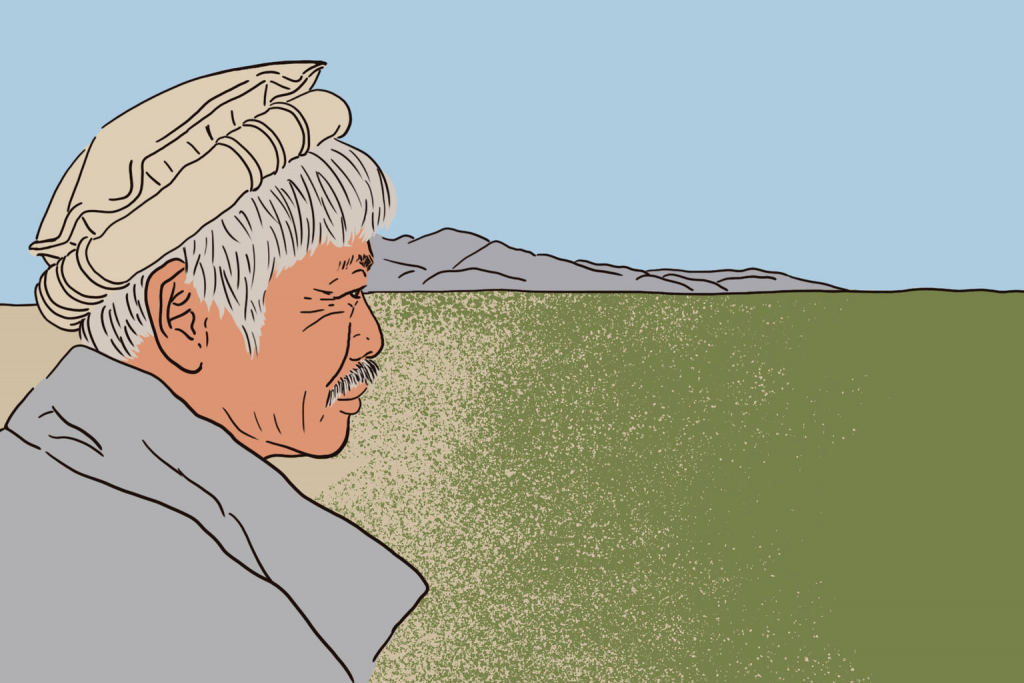Our Spotlight article this month looks at Dr Tetsu Nakamura, a man who should be celebrating his 75th birthday today. Tragically, the Japanese physician was shot and killed two years ago while heading to work in Jalalabad, Afghanistan in an aid vehicle. His driver and four bodyguards also died in the attack.
An honorary Afghan citizen, the man known as “Kaka Murad” (“Uncle Nakamura”) did so much for his adopted country during his time there. Inspired by the words “Light up your corner of the world,” by Buddhist monk Saichō, he devoted much of his life to alleviating the suffering of the people of Afghanistan as well as Pakistan.
In addition to opening several clinics, he helped build mosques and launched projects to construct irrigation canals. In a country devastated by drought, it saved hundreds of thousands of lives. Yet despite all of that, Nakamura still took different routes to work every day to ensure his safety.
Background
Born in Fukuoka on September 15, 1946, Nakamura dreamed of becoming an entomologist like Jean-Henri Fabre as a child. Knowing his father would never agree, he changed paths and went on to study at Kyushu University School of Medicine. After graduating as a doctor of neurology in 1973, he worked at various hospitals in Japan.
While he may not have pursued a career in entomology, Nakamura’s passion for insects remained. In 1978, he made his first visit to Pakistan, near the border of Afghanistan. An accompanying doctor on a mountaineering expedition to climb Tirich Mir, he thought the trip would give him the opportunity to see some rare butterflies.
When locals heard a doctor had joined the expedition, they started requesting medical help. Many suffered from tuberculosis and leprosy, which Nakamura put down to malnutrition and poverty. He was able to provide temporary health checks to some, but not much else. Seeing the plight of the rural poor had a big impact on him and he wanted to do more to help.
Moving to Pakistan
After listening to a lecture given by Dr. Noboru Iwamura in 1982 about his 18 years in Nepal vaccinating people against tuberculosis, Nakamura wrote a letter to Iwamura stating his intention to do something similar. He then received a request from the Japan Overseas Christian Medical Cooperative Services (JOCS) to take up a clinical position at a mission hospital in Peshawar in northwest Pakistan.
In 1983, his friends set up the non-governmental organization Peshawar-Kai to support his activities. The following year, Nakamura, his wife Naoko and two children set out for Pakistan. Immediately immersing himself in the culture, the doctor grew out his hair and bought a Chitrali cap. He also enrolled at a language school to learn Urdu and Pashto.
The hospital had very little in the way of medical equipment. There was one trolley car that fell when pushed and a stethoscope that caused injuries when put in the ear. Nakamura would often carry patients on his back. On top of that, he discovered there were no other doctors in the region. As head of the leprosy unit, he’d planned to stay for six years. Seeing how dire the situation was, however, he felt he couldn’t turn his back on the people there.
As well as leprosy patients, Nakamura also treated scores of refugees fleeing from neighboring Afghanistan due to the Soviet-Afghan War. The camps had been plagued by diseases such as malaria, dengue fever and tuberculosis so he provided his own medical services away from the hospital. In 1991, he opened three satellite clinics in the remote village of Dara-e-Noor in the northeastern mountainous area of Afghanistan. Many more followed.
One Irrigation Canal Worth More than 100 Doctors
By the start of the 21st century, Afghanistan was experiencing its worst drought in three decades. It led to crop shortages and the death of livestock, which left huge numbers starving. Most wells were bone dry and fights broke out at those scarce few that did produce water. Nakamura’s clinics were busier than ever with many malnourished children suffering from serious illnesses such as dysentery and typhoid fever.
“Fundamentally, there are problems with poor nutrition. Also, poor sanitation. Just washing with water would help. But I can’t suggest that because water is so scarce. The scarcity shows up in problems like this,” said Nakamura in the NHK documentary Water, Not Weapons. He added that “one irrigation canal will do more good than 100 doctors.”
And so, he set out to build that irrigation canal with water from the Kunar River. This wasn’t just some grand scheme that he would be able to pass on to experts. There were no civil engineers in the region capable of carrying out the task. Nakamura also had no knowledge of civil engineering or irrigation and subsequently taught himself how to draw plans. On top of that, he operated the hydraulic excavator while local farmers received a stipend for helping him build the canal.
Providing for 600,000
Construction began in 2003. Two years earlier, following the attacks on the Twin Towers, the US-led Northern Alliance forces entered Kabul. While many aid groups left the country, Nakamura and his team remained. They were mistakenly shot at by US military helicopters twice. “They fly in the sky in order to kill. We dig the earth in order to live,” observed Nakamura in his journal.
In spite of the dangers and various setbacks, nothing was going to stop Nakamura completing his task. And in 2010, that is what he and his team of farmers did. The Marwarid (meaning “pearl” in Persian) Canal was based on Fukuoka Prefecture’s Yamada Weir, an innovative irrigation system completed in 1790 that has maintained its original form ever since. The project was funded by Peshawar-Kai (known internationally as Peace Japan Medical Services).
The notorious Gamberi Desert, known as the valley of death as no trees grew there, was transformed into green farmlands yielding various crops. By 2016, eight additional canals had been built or restored in the area, irrigating 16,000 hectares. It helped provide food and water for more than 600,000 residents. The man chiefly responsible for it all was granted honorary citizenship by the government of Afghanistan in October 2019.
Mural of murdered Japanese doctor Tetsu Nakamura in Afghan capital erased – The Mainichi https://t.co/QRHxciJZtr
— Team ®️ bake0101🚲♂ (@bake01011) September 7, 2021
Nakamura’s Death and Legacy
Two months later that man was dead. Nakamura was shot five times while heading to work in the provincial capital of Jalalabad. He left his lodgings before 8am on December 4, 2019, with his driver and security guard. Four more people were in the car behind. At least seven assailants forcibly stopped both vehicles and started shooting. Six people died as a result of the ambush, while the driver in the second car managed to escape.
Almost two years on and we are no closer to understanding the motive for the attack. No group has taken responsibility. Initially the Taliban were suspected. In 2007, Kazuya Ito, an agricultural specialist who moved to Afghanistan to work with Nakamura, was killed by the Islamic militant group while on his way to an irrigation site. They denied any involvement in the 2019 shootings, though.
The Taliban seized power of the country on August 15 of this year. They soon ordered a mural dedicated to Nakamura to be covered over with white paint. Around 200 volunteers had painted the picture of the doctor on a street wall in central Kabul. It may have been erased, but his legacy will live on in Afghanistan. The Peshawar-Kai will make sure of that.
“We want to continue all the work Dr. Nakamura has undertaken,” was the defiant message from Chairman Masaru Murakami after his death. Even now, the group refuses to turn its back on Afghanistan. Just six days after the Taliban regained control of the country, Peshawar-Kai resumed medical care activities. Lemon harvesting also restarted.
“We choose not to go to the places where everyone is willing to go, but rather the places where help is desperately needed and no one else is willing to go.” Dr. Tetsu Nakamura
*Feature image by Anna Petek









